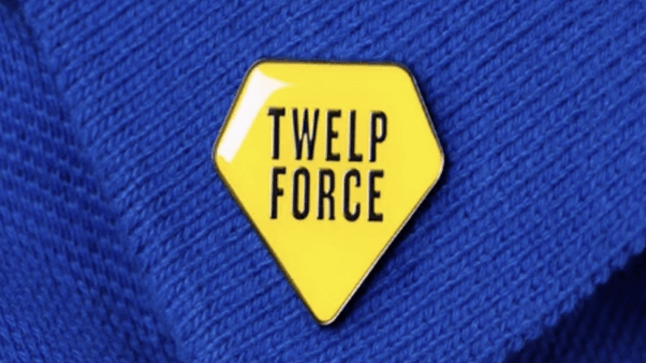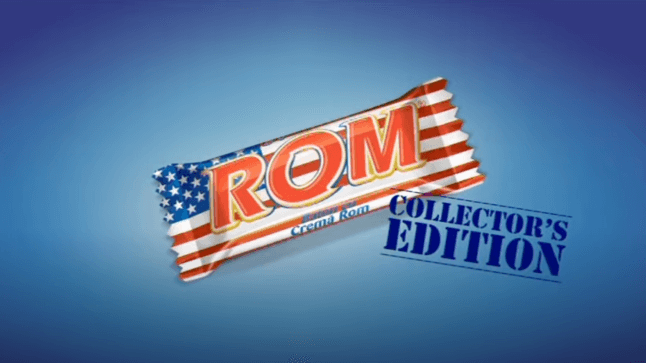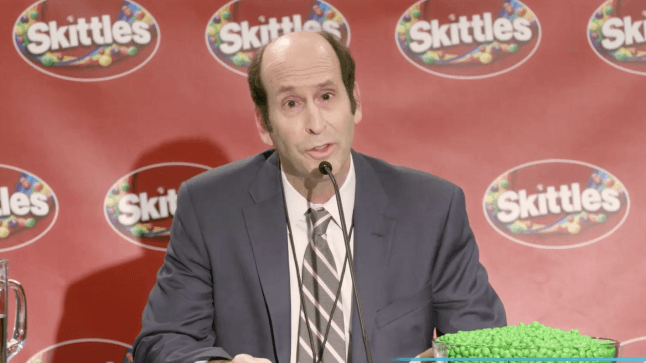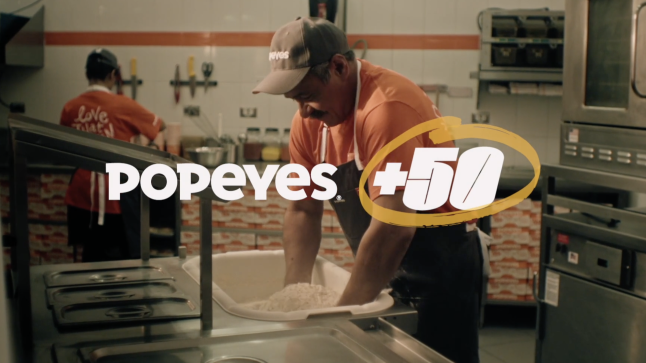ESTEEM
Respect for others is
the shortest path to truth.
Following on from “honesty/conscientiousness” and “truth”, the next key word is “respect”. Salvia splendens, a plant in the Lamiaceae family found all over the world, means “respect” in the ‘language of flowers’. Ornamental salvia grows naturally in southern Brazil. It was first named by Western scientists in 1822, and arrived in the United Kingdom later the same year. While the exact number of cultivars is of the plant is unclear, some sources put the figure at over 900.
Sage, the herb commonly used in cooking and traditional medicine is also a type of salvia. Sage has antioxidant properties, with a history of use as a medicinal herb since ancient times. In Europe, sage was believed to play a role in maintaining family health, and it features in numerous proverbs and sayings. Sage was also used as a medicinal herb since ancient Roman times, and the very name salvia comes from the Latin salvus, which means a healthy, good condition. It was the word salvus that became sauge in French and then sage in English. Sage in English, of course also means “wise person”, and this led to sage representing “respect” and “wisdom” in the ‘language of flowers’.
In marketing and PR, respect for each individual customer is paramount. Corporations have long been dedicated to the practice of customer relations management (CRM) for maintaining and continuing good customer relationships. While CRM refers exclusively to customers, from the perspective of “building good relationships”, CRM has much in common with PR. In other words, when working to build relations with the public (with society) it is important to practice interactive engagement in listening and dialogue by “listening to the opinion of the other party and dealing positively with their requests.”
In Japanese, a key word in public relations terminologies is ko-ho, which combines the characters for “wide” and “to broadcast”. Recently, many of you will have heard to coinage ko-cho, which forms the reverse concept by combining the characters for “wide” and “to listen”. Good relationships are created by mutually exchanging opinions based on the foundation of mutual respect. Another important factor is the further distillation of those relationships into something even more positive. Methods of CRM include measures that encourage the customer to want to maintain the relationship. These may include the provision of special members’ offers and exclusive members’ services designed to hold onto existing customers, and various other forms of favorable treatment. CRM also includes a digital approach, whereby companies collect and analyze customer data to try to improve the efficiency of sales. However, the latter method can easily fall into excess, as one sees with the recommended advertisements that consumers frequently have to put up with in online shopping. These can have the opposite effect of encouraging customers to end the relationship. The growth of this kind of phenomenon resulted in the establishment of strict regulations, such as the General Data Protection Regulations (GDPR) set out by the EU to govern the handling of personal information. Companies acting in this manner are not thinking of what customer’s actually want or need; they are simply doing all they can to abuse the personal data for the company’s own needs, which is a problem, as they are simply ignoring the above kind of relationship-building that comes from listening to and responding appropriately to individual customer demands, as referred to above.
Alongside customer relationship management, many companies also have Customer Satisfaction (CS) departments, which include customer call centers. They listen to customers’ opinions and questions, handling their complaints, working to build and deepen customer relationships by the way in which they respond to the various inquiries. These departments are where companies listen carefully to customers. Complaints are treated as important opinions and used to improve products and services. If members of the public call a company with an angry complaint, they may feel suddenly deflated if told “thank you for your advice”. However, large numbers of people appreciate being listened to properly, and strangely, they may naturally find themselves saying “good luck”, shifting their position to encourage the call center operative. CRM is about building that shared sense of agreement, and while it may feel like a rather “analog” process, it is the very warmth of the process that may, in our current culture, produce customer satisfaction.
Both in marketing, and in corporate communications, it is important to respect your audience. The first example I am going to introduce in this section comes from the major US home appliance retailer Best Buy, which in 2009 launched the TWELPFORCE campaign.
TWELPFORCE


The “Twelp” of “Twelp Force” is a coinage created by combining “Twitter” and “Help”. Adding the word “Force” gives us a name which means “an army of people ready to help you on Twitter”. When a new academic term starts, many people may have concerns about buying personal computers and other equipment. The best way to describe “Twelp Force” is to say that it was launched to help people in that position. More than 2000 Best Buy employees, including the CEO, went on Twitter to answer all kinds of enquiries from customers about Best Buy’s electrical appliances, allowing the company to significantly reduce its call center expenses while providing a 24-hour a day service that could also answer technical questions.
Customers generally have problems with products when they are not anticipating them. It causes extreme difficulty for many people when they are faced with problems at unexpected times, such as during the night or when the shop that sold them the equipment is closed. The “Twelp Force” addresses this problem by providing responses 24 hours a day. As a result, the service naturally increases customer engagement.
Even more remarkable is the “Twelp Force” policy to also answer questions from people who were not even Best Buy customers. Perhaps because this generous, open, attitude struck a chord with customers, Best Buy’s laptop sales soon jumped by 40%. By taking on board and respecting customers’ need to solve problems immediately and doing all they could to provide a solution, Best Buy’s marketing strategy succeeded. While this may seem a direct and simple approach, it is without doubt an example of a company that has found the correct answer.
Of course, this is also, to a degree, an example of “easier said than done”. If we think about recent labor environment issues, we may raise questions over the practice of having employees ready to answer questions 24 hours a day. However, the campaign also reportedly succeeded in generating a sense of pride among employees over the useful service they were providing to their customers, resulting in improved employee engagement. If the experience of listening to customers with respect, working to improve their levels of satisfaction, and having feelings of self-approval and pride also provides motivational benefits within the company, we can say that the company has killed two birds with one stone.
I also heard about a campaign that actually encouraged fans of a brand to complain about a new version of one of its products. Let me introduce you to an extremely skillful campaign that did not simply encourage people to complain, it cleverly incorporated triggers that reminded passionate fans how much they love the item concerned. The 2011 campaign, from the Romanian chocolate brand ROM, was called American Rom.
American Rom


Since it was launched in 1964, Rom chocolate bars have featured a design that incorporates the Romanian national flag. However, emphasizing tradition and history can sometimes end up highlighting a product as old-fashioned. Recently, Rom’s image is that of a product preferred by seniors. In other words, while chocolate is a product category that manufacturers hope to sell continually to the young, the patriotic image of the product had been driving young people away. In fact, younger people in Romania felt a stronger pull from the “cool” American brands like Snickers than they did from Rom, which stressed its ties to the Romanian as a nation.
In these circumstances, Rome decided to launch a daring campaign to attract the attention of younger people and spark debate over Romanian values. They decided to switch the Romanian national flag on their packaging for the stars and stripes, announcing the new design in the media. This resulted in an explosion of social media posts on the “US takes over Rom, the quintessentially Romanian chocolate”, provoking a huge debate. The manufacturer was criticized for “giving up on their nation”, and they became the subject of focused online attacks. With one eye on the furor, the company, just seven days after changing the packaging, ran a commercial to say that it would change back to its original Romanian flag design.
In fact, the manufacturer knew from the start that Romanian people actually loved Rom. Large numbers of people responded to the surprise announcement with calls welcoming the change back to the familiar packaging. While it originally appears that the customers were complaining, the campaign was actually designed to produce a “boomerang effect”, whereby the complainers ended up reaffirming their love for the product. In the final analysis, the campaign reached 67% of all people in Romania, sparking a debate not only about Rom chocolate, but also bout patriotism more widely. Rom was able to strengthen its position as a symbol of that patriotism. The most notable effect of the campaign was that it resulted in Rom outselling Snickers.
Sometimes, people may spend their time idly, unsure of what they want. After time passes, they may turn around and wonder why they did not notice certain emotions earlier. Sophisticated marketing can inspire people to action by awaking desires that are sleeping deep within their unconscious. In the case of newly sprouted emotions, that have never previously existed, making predictions about attitudes and behavior might be difficult. However, what about in the case of emotions that were held in the past? If people have previously expressed their emotions openly about a particular topic at a particular time, then reproducing those emotions is a definite possibility. It may take an extraordinarily large amount of time to continually seek the discovery of new things, focusing on igniting new interests. However, previously experienced emotions are, from a certain perspective, easier to imagine. At the very least, we may presume that people who have shared time together in the same environment may experience similar feelings. In this chapter I have stressed the importance, in contemporary communication, of taking action that considers the feelings of the target of the communication, and one way of finding a starting point for building new connections may be to take on the challenge of finding commonalities with your target audience by imagining how they have previously spent their time.
Rom succeeded in generating attention through the unusual combination of a product that represents Romanian history and the United States national flag. As a communication strategy, this is certainly a worthy reference. Unusual combinations that defy people’s expectations create an awkwardness that may drive people to post about the topic on social media.
Another phenomenon we may witness in advertising campaigns is when unusual combinations result in a strange type of synchronization which in the end creates a subtle new fusion that wins out over the awkwardness. An example of this is the 2023 collaboration between Jimmy Choo and Sailor Moon.
Jimmy Choo, the renowned luxury shoe designer, chose as its collaboration partner Sailor Moon, a popular manga and anime series particularly beloved by young Japanese girls. In the story, the heroine, a junior high school student, changes into a warrior for justice against the forces of evil. While at first sight it is hard to identify the points of commonality between a brand of shoe and an anime about a magical heroine, it turns out that international celebrities including Paris Hilton and Billy Eilish, exactly the type of people that Jimmy Choo wants to target, have publicly declared themselves huge fans of Sailor Moon, and the purpose of the collaboration was to create a collector’s item that fans of both brands would go crazy for. Both Paris Hilton and Billy Eilish have been seen in public cosplaying as Sailor Moon or wearing Sailor Moon printed T-shirts. Of course, the idea was to stimulate celebrities decide to buy the products for cosplay, but, beyond that, having these celebrities endorse and the product and share their love for it would have a huge market impact.
However, what I want to note here is not simply the campaign’s skill in creating a buzz from a marketing perspective. What is important is that the two brands collaborated together in a way that did not damage the values of their respective brands, quite the opposite in fact. They succeeded by mutually raising the value of the other party’s brand. In fashion, and the fashion industry, there is a prominent tendency towards “lookism”. However, through this collaboration, Jimmy Choo was able to send a strong brand message by infusing its brand not only with the trendy side of the interest in Sailor Moon, but also with other aspects of the story including women’s empowerment, as well as the importance of being yourself (as demonstrated by the various characters in the story), and the importance of having confidence, and thinking and acting with inclusivity.
From Sailor Moon’s perspective, the brand could not only highlight the value shown above, but also go beyond its presence in the existing media of manga and anime to present its desired message in the real world of fashion and the celebrity culture in which Jimmy Choo’s customers play a leading role. In other words, the resonance between the values expressed by the two brands allowed them to deliver a message from a different perspective to each brand’s respective fans. This is what proved to be the most important aspect of the collaboration. The campaign also succeeded in promoting sales, with fans of both brands approving of the collaboration and the Jimmy Choo/Sailor Moon shoes quickly selling out. Since frequent mentions of Jimmy Choo continued even after the campaign concluded, this initiative certainly left a successful mark in terms of both brand management and marketing. The connection between the two brands is a great example of the success that can come from mutual respect. For this kind of collaboration to succeed, it is important for the two brands to think about how they will share and understand that the party’s fundamental values. Creating/discovering opportunities for that to happen may be of core importance going forward. This is exactly why we should always work to maintain respect and our keep ears open.
Both marketing and corporate communications, it is important to respect your audience and give them your full attention. Respect for others starts with being humble. In 2022, the candy Skittles launched the “Apologize to Rainbow” campaign, which showcased a humorous and unusual take on humility designed to win back prior fans of the brand who had not engaged with it for some time. This campaign distills the advantages of the case introduced above while updating it for the modern era.
APOLOGIZE THE RAINBOW


Skittles, a soft candy with a fruity taste and gummy texture, is manufactured by the Wrigley Company (Wm. Wrigley Jr. Company), which is a subsidiary of Mars, Incorporated. Its slogan is “Taste the Rainbow”. While “rainbow” can also be used to mean “diversity”, here it refers to the mixture of different flavors that people can try. Skittles are covered in a sugarcoating, and stamped with a letter S. Each candy is in a different color, and each color has its own flavor. One of the colors is green, and the green skittle was originally lime flavored. However a brand renewal in 2013 saw the company change the green skittle from lime flavor to a green apple flavor. While this might feel like a minor change, it was a major incident for fans of the brand, who reacted extremely badly, leading to the failure of the brand update. The change, which was made for the company’s own internal reasons, upset a large number of long-standing fans, particularly those who loved the lime flavor. For the next nine years, fans of the lime flavor fought a long-standing campaign for it to be brought back. You could say this shows an incredible love of the product. It also shows an incredible nerve on the part of Wrigley's that they kept quiet in the face of these complaints for a whole nine years.
Then, in 2022, Skittles finally decided to resurrect the lime flavor, and apologized to the 130,880 people who had petitioned for the return of the lime skittle. That’s right, recognizing the length of the nine year gap, Wrigley's decided to take the ridiculously polite approach of issuing an individual apology to every one of the customers who had called for the return of the lime flavor. They not only apologized through channels including a live session on Twitch, posts on Twitter (now X), and with a billboard in Times Square, New York, they also gathered the media for an apology press conference. The press conference was also unique, with one of the company’s managers reading angry posts from Twitter and other social media, individually apologizing after each one. When the monitor started to malfunction midway through the press conference, they brought in an overhead projector from the side of the conference room to project printed copies of the screenshotted tweets, continuing to apologize after each one. Perhaps it is spoiling things to let you know that this was a parody press conference designed to spark laughter, but it was also effective as a means of symbolizing the seriousness with which the company took each individual complaint.
In Japan, companies and celebrities often hold an apology press conference following a scandal, but these events frequently come in response to demands from the public or the media, resulting in something that feels superficial, formulaic, and lacking in sincerity. In the US, unlike Japan, companies don’t frequently hold apology press conferences in the first place. Apologizing means admitting fault, and this can place companies at a severe disadvantage during any subsequent legal action. Given that cultural background in the United States, the decision to hold a parody version of an apology press conference to garner further attention was understood as a humorous display of humility from a company that had kept quiet on the issue for nine years, and as a result the company’s intention was broadly understood and appreciated. It is worth noting that apologizing to each individual tweet took 10 hours. In addition, when reintroducing the lime flavor, Wrigley's did not simply apologize to the upset fans, they also sent them a free sample of the lime Skittles, skillfully linking the apology to their marketing.
While the Skittles campaign is humorous, at the same time as deliberately being rather absurd, apologizing for a past mistake did put the company’s humility front and center, showing their desire to win back customers who enjoyed the lime flavor. After getting the public on side, Wrigley's successfully recorded historically high sales of Skittles. Reversing course to take on board and respect the opinions of the lime flavor fans who had previously been ignored was an extremely successful marketing strategy, with the company not only bringing ex-fans back into the fold, but also increasing engagement with current fans, who supported the company’s stance. These factors combined to drive the highest ever sales revenue in Skittles history. My only concern here is that fans of the discontinued green apple flavor may eventually express their deep dissatisfaction, perhaps forcing the company to once again hold an apology event.
I think we can agree that changing the flavor of a company’s major product requires considerable courage. While there will undoubtedly be fans of previous, traditional flavors, the public’s tastes continue to change year on year. Some products have successfully maintained strong sales over the long term by gradually reflecting modern preferences through subtle changes to the flavor, rather than a publicly announced brand refresh. While this is not the case in the previous Skittles example, there are countless cases of companies who have sought to generate media coverage by boldly announcing that they have updated their products to meet modern flavor preferences, but instead have wound up simply alienating many of the existing customers.
There are also examples of companies taking it upon themselves to worry about the health of consumers and altering their product to, for example, reduce the volume of salt while maintaining the previous taste. This is done as a secret strategy, without making a public announcement at the time, with the company at a later date surprising consumers with an announcement that they have “helped them to become healthier”.
However, generally speaking, when we think about the respective relationships between companies and the customers, this is not the right way to do things. The way to find the correct approach is to gather information on the customer’s environments and attitudes, and constantly maintain good customer relations. Companies that can do this will naturally find out what customers want. Campaigns that provide a model answer on how to engage with loyal customers are always a good reference point.
In today’s world, where diversity is considered increasingly important, more companies are boosting brand engagement by ensuring that they respect and appreciate everyone, whoever they might be. Let me introduce some examples focusing on that concept.
2022 saw the launch of “The Breakaway: The first ecycling team for prisoners”, a campaign which, as the name implies, was unusual in that it focused on incarcerated individuals. The campaign harnessed technology to overcome the inherent difficulty of engaging with prisoners, while also aiming to make a major contribution to their mental and physical health. Generally speaking, no one objects to respecting various types of diversity including diversity of race, gender, disability, age, or religion. It seems obvious for everyone to agree with and support these efforts. However, prisoners’ rights is one area that is left out of current diversity efforts, also appearing difficult to tackle.
If it is important for us to respect and engage with all kinds of people, then even in the case of prisoners, who have committed a crime, we surely have a duty to respect and engage with them as human beings. However, as prisoners are physically incarcerated, and their contact with the outside world is under strict control, dialogue through face-to-face interaction is extremely difficult. Even so, by having a purpose and helping them maintain a connection with people, we can help prisoners smooth their future return to society. The above is the philosophy behind the following campaign by the French sports brand Decathlon.
THE BREAKAWAY


The Breakaway campaign was based on the Zwift ecycling platform. Through the campaign, six prisoners in a Belgian prison competed and interacted virtually with members of the public through esports, with the aim of helping the prisoners feel more human and more motivated to try and rejoin society. The campaign is consistent with Decathlon’s goals as a company, which are to promote involvement in sport in line with its corporate mission of “sustainably bringing the power of sport to everyone, everywhere” (even if it might at first seem impossible).
Sports provide not only physical benefits, but also benefits for emotional and mental health. In 2020 and 2021, when many people in Europe were unable to go outside due to the frequent lockdowns during the coronavirus pandemic, many people felt like prisoners in their own homes. Part of the Breakaway campaign’s message was to encourage people, through sports, to break away from that feeling of entrapment. Decathlon in Belgium actually began these activities in the spring of 2021, focusing their marketing on the theme of freedom.
Prisoners who took part in the esports team were all selected from Oudenarde Prison, one of the highest security prisons in Belgium. Decathlon supplied them with the required cycling gear, as well as a cycling trainer. When the teams took part in races, the fact that they were prisoners was hidden from the other members of the public taking part. The prisoner’s training and actual races were all filmed in detail for a podcast to show, at a later date, how the prisoners’ lives were changed through the process of training for a race with members of the general public, setting a goal, and then doing all they could to work together as a team, highlighting the beneficial effects of sport.
One of the other teams participating in the race was a “legal team”, which included lawyers, security people, judges, and even the country’s Minister of Justice. While, in the courthouse, these two sides would be adversaries, the opportunity to compete on an equal footing through the separate arena of sport, no doubt helped to relieve the prisoner’s stress. In English, breakaway means to “go on the run”, although of course ‘break away’ is not being used here to mean escaping from prison. Rather, it represents the way that the campaign takes the prisoner’s mindset outside the walls of the prison, albeit virtually.
The race involving the prisoners’ team and the legal team was broadcast live on the Decathlon Facebook channel and reported on by major Belgian media. Specialist cycling media from other countries also reported on the event, reaching 15 million people. The Decathlon campaign succeeded in widely disseminating the narrative that the prisoners, who were shut into an enclosed space and feeling weak mentally, were able to feel a connection with other people through virtual sports and improved physical and mental health. This effort gained widespread acceptance for the brand’s campaign vision.
Interestingly, following the original advertisement for this event, which was released in March 2021, races other than those organized by Decathlon also began to launch similar initiatives. In May of the same year, John McAvoy, a former armed robber, launched a social ecycling event for hundreds of prisoners. McAvoy was himself formerly a prisoner serving a life sentence, but following his early release he became a triathlete, and he now has a contract with Nike, making him an extremely good example of how sport can help prisoners get their lives back on track. He also appears as a speaker at schools and juvenile reform institutions, and works through a foundation that he established to help young people struggling with problems or poverty.
In Belgium and various other European countries, a number of projects have already attempted to use information technology to support prisoners’ returns to society, including projects that provide incarcerated people with Internet access. With these projects as a foundation, Decathlon’s organization of races on the virtual cycling service Zwift was followed by an announcement by Belgium’s Minister of Justice that all prisons in Belgium would over the next few years be equipped with ecycling facilities. The initiative spread throughout the country, showing how a single project can strike a chord with many people who may then try to expand the idea further, eventually creating a movement. Skillfully connecting like-minded projects in various places and creating a motivating story can lead to a wider web of common purpose.
The 2023 Cannes Lions prizewinners also show how projects like the above are growing in number. One example is the 50+ campaign, a 50th anniversary campaign rolled out by Popeyes Louisiana Kitchen (usually known simply as “Popeyes”), a US fast food chain known for its fried chicken. While Popeyes is not so well-known in Japan, it operates more than 3,000 stores in 25 countries and territories around the world.
50+


While the campaign, which ran in Mexico, was held to celebrate the company’s 50 years in business producing their iconic fried chicken, in Mexico specifically, the company had only just re-launched its operations in the latter half of 2021. As a comparatively new presence in the market, the company had to think about how to raise awareness of its 50th anniversary.
They came up with the idea of connecting the anniversary campaign to one of Mexico’s social issues, namely, the higher rate of unemployment among people aged 50 and over, as people of that age have difficulty in finding new jobs. Several million over 50s in Mexico are out looking for the work they need to take care of their families. However, based on the stereotype that seniors can only produce low-quality performance, more than 90% of the job advertisements in the Mexican market specifically exclude older people. Yet, according to Popeyes’ research, seniors can be the best performing employees in the workplace. They also have a low turnover rate. Further, Popeyes found that the majority of senior workers share the company’s values of “working by hand, working with determination, and working with love”.
Popeyes’ first goal was to raise awareness of this issue. To achieve this, they worked together with fast food industry newspapers to publish articles about this social issue that did not explicitly refer to their anniversary campaign. They then began online recruiting activities designed to reach people aged 50 and over who were living in the vicinity of Popeyes stores. The 50th anniversary campaign specifically aimed to hire people aged 50 and over who shared Popeyes’ values. These activities were rolled out across Mexico, resulting in more than 2,000 people applying for the job through the campaign website. In this way, Popeyes were able to increase by a factor of 14 their employment of people aged 50 and over in their stores across the country. They also created a website to showcase the profiles of those seniors who they were unfortunately unable to hire, with that website then serving as a communication hub for other brands such as Burger King, Bimbo, Doritos, Starbucks and Walmart to find and hire senior personnel.
This campaign won Bronze Awards at the Cannes Lions in the PR and Direct categories. While the campaign is simple, it serves as a bridge between social issues and brand values, and contains many elements that serves a useful reference, including the way in which the project was further scaled up in its latter stages.
Another anniversary-related campaign from 2023 that attracted my attention was also a Cannes Lions winner, taking home a Gold Award in the Digital Craft category. It is the “Spotify Wrapped” campaign from Spotify, which has been running annually since December 2016.
Spotify Wrapped


Spotify Wrapped is a viral marketing campaign, which the company introduces every year in early December. One characteristic of Spotify is that every listener can create playlists that reflect their own musical taste, and Spotify uses the huge volume of data it collects from each user to summarize their listening habits, allowing users to look back at the end of the year and confirm their personal favorite 100 songs over the past 12 months. Obviously, the list is composed of songs that the user has been listening to on a regular basis, but even so listeners may enjoy looking back on their listening habits, even finding some surprises. Over the past few years, Spotify users have started to look forward to this year-end custom, with the company successfully achieve in over 1 million social media shares during the period of the annual campaign as users share their ‘most listened’ data with their friends.
In 2022, the company spiced up the regular annual campaign by focusing on diversity and plurality to create an even more personalized listener experience. Spotify created colorful monograms in a 16×16 grid which further combined into multiple layers to produce a total of 48 possible unique combinations. The in-app user-experience was also re-designed to become more personalized and familiar. In addition to the basic data such as the artists, genres, songs, and podcasts the user had been listening to, and the total amount of time they had spent on the app, Spotify also arranged for users to share on social media their personality type on the basis of the listening habits in the morning, noon time and evening. An incredible 156 million people took the opportunity to create and record their annual listening habits in this new way. It is quite incredible for a company to deliver a personalized experience to this number of individuals. While the data is presented in a fixed frame in a digital environment, the success of the campaign does show the results that can be achieved by responding conscientiously to each individual user. Taking the initiative to expand an ongoing service and going even further than users are currently asking for, can, as you might expect, generate an emotional reaction and improve engagement.
We have looked at various different campaigns, and I would argue that, in all of these examples, we are seeing companies that simply pay careful attention to their individual customers. Even when responding to a large number of individuals, if users can see that the company is keeping each single individual in mind, and responding to them sincerely, they will start to feel affection for and alignment with the company.
Showing respect for your customers doesn’t simply mean placing yourself at their beck and call, it means truly understanding their essential nature and making the customers part of the group. Everyone has their own respective criteria for judging value, it is quite natural for people to come to wildly different conclusions even when they are looking at the same things. Companies don’t need to make forced efforts at understanding or try to push all of that variety into exactly the same shape. That only results, somewhere down the line, in continued misalignment between the two parties, and the lack of true understanding. True inclusivity is achieved by respecting the other party has they are, and recognizing differences of opinion, acceptance while not trying to force any corrective action. It goes without saying that inclusivity starts with connections between people. Inclusivity also provides us with opportunities to further deep in future relationships while recognizing differences. With “respect for the other party” as the foundation, there is no need to fear new connections or mutual differences, and such connections can surely be harnessed to set both oneself and one’s counterparty on a path to openness and freedom.

ARTIFICE
ARTIFICE
ARTIFICE
ARTIFICE
ARTIFICE
NEXT CHAPTER


The skills required to
drive communication home.